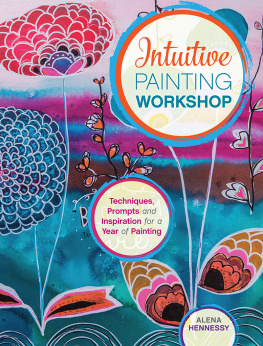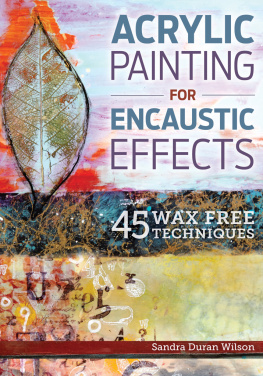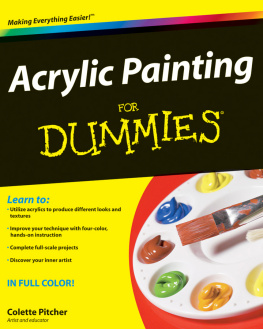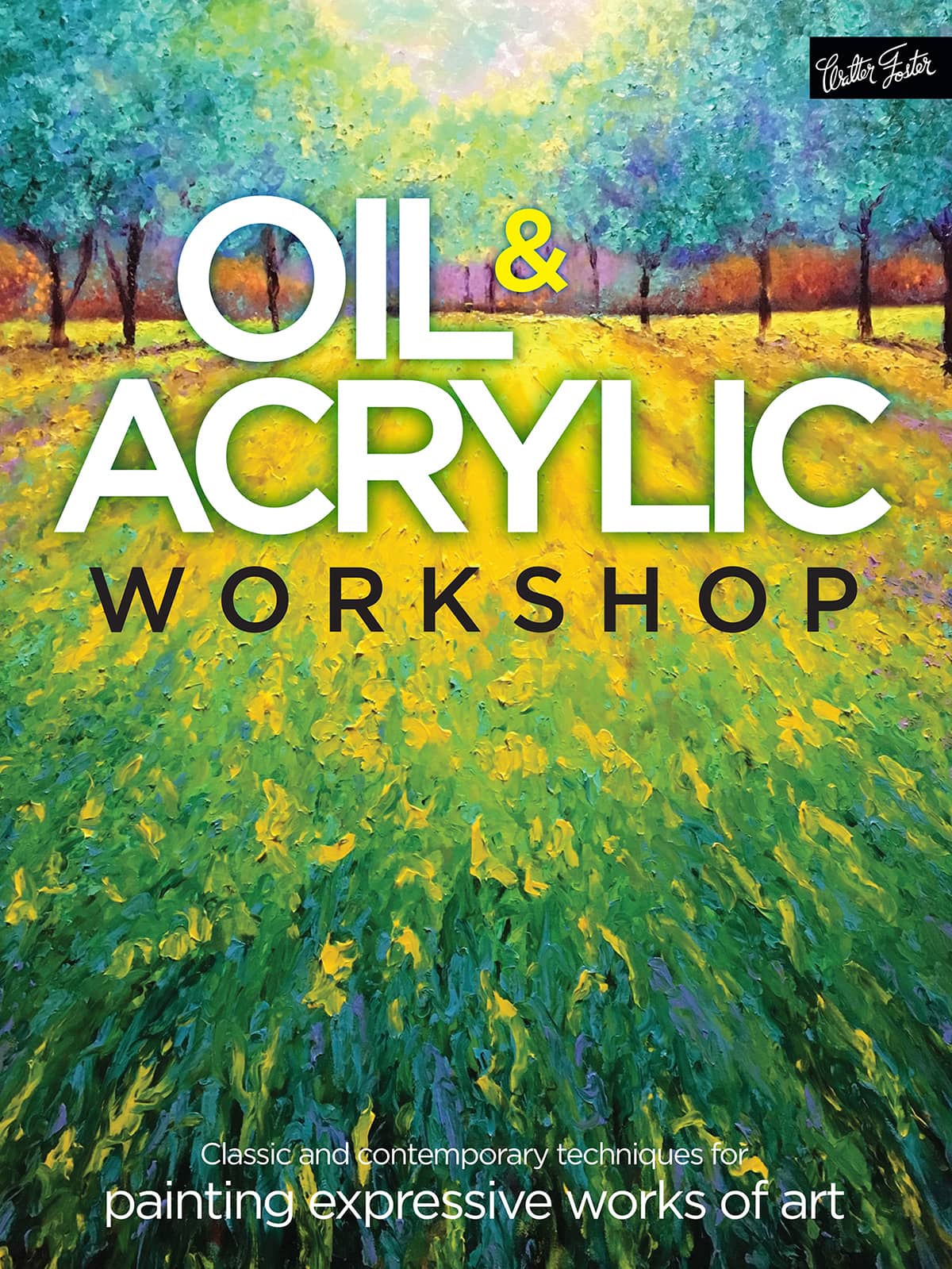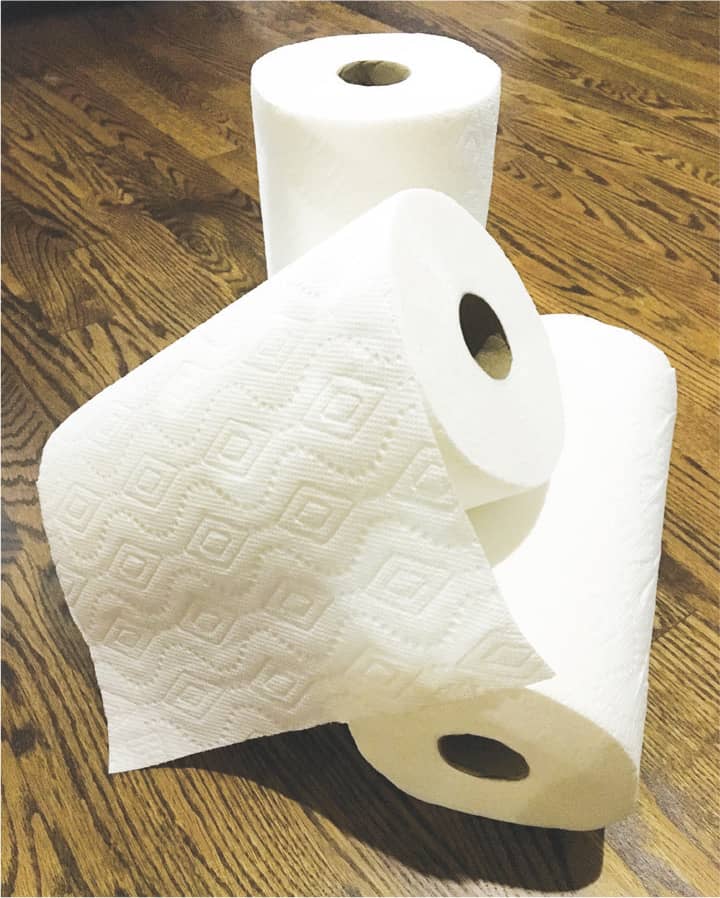OIL &
ACRYLIC
WORKSHOP


2017 Quarto Publishing Group USA Inc.
Published by Walter Foster Publishing,
an imprint of The Quarto Group
All rights reserved. Walter Foster Publishing is a registered trademark.
Artwork on cover and shown Yiqi Li
Artwork and photos shown Kimberly Adams
Artwork and photos shown Bridget Skanski-Such
Photos shown Shutterstock
Project Editor: Nicole Sipe
Page Layout: Jacqui Caulton
Digital edition: 978-1-63322-446-9
Softcover edition: 978-1-63322-280-9
All rights reserved. No part of this book may be reproduced in any form without written permission of the copyright owners. All images in this book have been reproduced with the knowledge and prior consent of the artists concerned, and no responsibility is accepted by producer, publisher, or printer for any infringement of copyright or otherwise, arising from the contents of this publication. Every effort has been made to ensure that credits accurately comply with information supplied. We apologize for any inaccuracies that may have occurred and will resolve inaccurate or missing information in a subsequent reprinting of the book.

6 Orchard Road, Suite 100
Lake Forest, CA 92630
quartoknows.com
Visit our blogs at quartoknows.com
This book has been produced to aid the aspiring artist. Reproduction of work for study or finished art is permissible. Any art produced or photomechanically reproduced from this publication for commercial purposes is forbidden without written consent from the publisher, Walter Foster Publishing.
Introduction
Oil and acrylic are two of the most popular and versatile painting mediums available today. No matter your skill level, if youve ever painted before, you probably used paintbrushes and acrylic or oil paints to create art.
Now its time to branch out and try something new with the help of Oil & Acrylic Workshop! This book features tips, techniques, and art from three diverse oil and acrylic artists. Learn about their tools and materials as well as their distinctive methods, and then create your own expressive, vibrant, and unique art using the step-by-step projects featured in this book.
First youll meet Kimberly Adams, who uses her fingertips and oil paints to create gorgeous landscapes full of texture and detail. Then Bridget Skanski-Such reveals the varied tools and techniques, including acrylic paints, brushing, stippling, block printing, spattering, and finger painting, that can be used to create her romantic, magical animal and nature subjects. We finish with Yiqi Li, who uses palette knives and oil and acrylic paints to convey the emotion and beauty in nature.
Learn how these three artists tools and materials work, and then express yourself via the diverse methods and endless colors, textures, and effects featured in Oil & Acrylic Workshop. Lets get started!
Kimberly Adams
CONTEMPORARY IMPRESSIONIST KIMBERLY ADAMS creates vibrant landscapes without brushes or tools, applying the paint only with her fingertips. Kimberly studied art at a young age and took private lessons in the small town where she was raised in New Mexico. She pursued her passion for art by studying fine art in college, where her emphasis was on pastels and human figure drawing. She is now considered a finger painter of fine art.
Kimberly lives in Washington and is an active member of the board of directors for Parklane Fine Art Gallery in Kirkland, Wash. She is deeply rooted in the art community in Kirkland and teaches workshops at Cole Gallery in Edmonds, WA. Her paintings represent her love for nature and her adventurous heart.
View more of Kimberlys work at www.artbykimberlyadams.com.
Tools & Materials
PAINT
When finger painting with oil, choose an oil paint with lots of pigmentation. You will see better results when blending and building texture with high-quality paint. This is especially true with finger painting because the paint colors are mixed directly on the canvas, straight from the tube, and not on a palette first. Oil paints with less pigmentation tend to contain more filler, and they can become sticky or oily.
CANVAS
You will need a primed cotton or linen canvas. Gallery-wrapped canvases work well with finger painting because you can hang the painting without framing. The canvas can be finished by painting a solid color on the edges, or you can continue the painting on the sides.
GLOVES
Medical-grade gloves can be found at your local pharmacy or ordered online. Its important to find a size that fits your hands snugly, but not so tight that theyre uncomfortable. Loose-fitting gloves make it difficult to control the paint when applying it to the canvas. Ensure that the gloves are of good quality to avoid breaking through the fingertips. Gloves should last over several weeks. Gloves also make cleanup fairly easyall you have to do is remove them when you are done.
PAPER TOWELS
To maintain vibrant colors, paper towels are necessary to clean off your fingertips between color applications. Keep plenty nearby, as you will use quite a few throughout the process.
EASEL OR TABLE
An easel is helpful when finger painting because it holds the canvas in place when you are applying the paint. Placing the canvas on a flat surface works well too. You can also use a table easel as long as it is secure and stays in place while painting.



